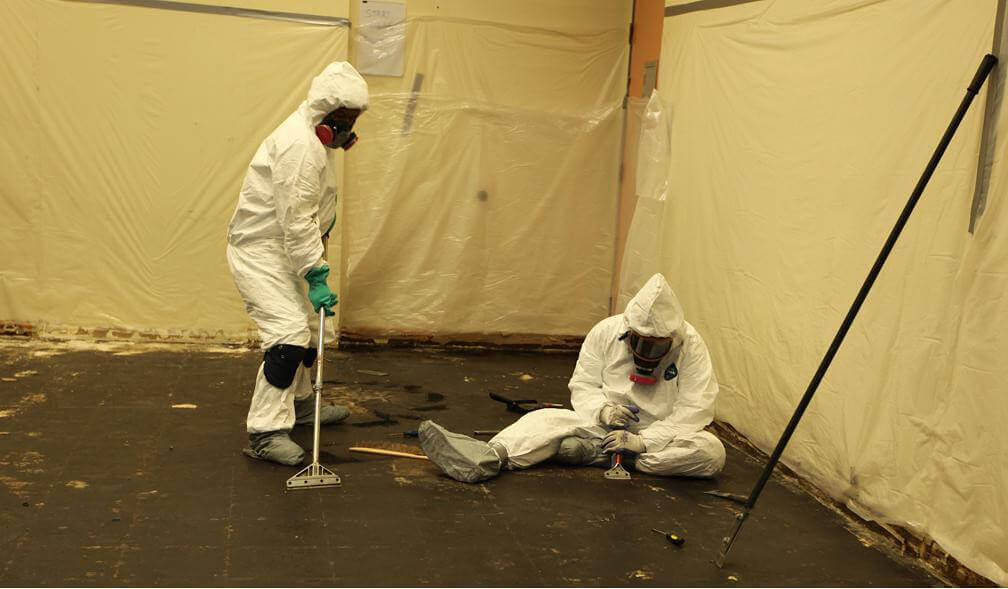How Do I know if I have Asbestos in My Home or Business?
Like many ordinary people, you may have heard of the dangers of asbestos. Unless you work in the industry or have been trained to identify asbestos it can be difficult for most of us. Some simple advice would be that if you think an item may contain asbestos, then “don’t touch it” would be the first step.
One thing you need to know is that asbestos is an extremely tough material. This is the reason it was used so prominently from the 1940s to the 1980s in Australia at least. It was officially banned in 2003 all over Australia. Asbestos becomes dangerous if it’s disturbed as this is when its fibers can become airborne and penetrate the lungs. If asbestos is undamaged it is relatively safe.

5 Tips on Asbestos Products in the Home
There is much to learn about asbestos. Most people have no idea what it looks like or even where to find it. Let’s take a look at this easy to read guide on where you may find asbestos in your home or business property.
The Roof
Roofing in Australia commonly used asbestos products due to their effectiveness. There are two types of tiles you should look out for. Mastic tiles and bitumen that have been hard pressed with metal. If you are unsure you can contract an asbestos testing laboratory. An experienced asbestos removal company will also give you sound advice. You could also get advice from a reputable roof restoration company that surely has experience in dealing with these types of tiles.
If the tiles are in good condition, then they should be relatively safe. However, if the tiles are damaged, it may be a reason to consider roof restoration or installing a metal roof.
The places where you are most likely to find asbestos products are going to be in the roofing.
The Ceiling
With its durability and resilience, asbestos was also used in textured coatings or Artex in the ceilings. This material makes every surface coating strong and is excellent for house and building construction because it is resistant to heat, sound, and electricity. Since it was only completely banned in 2003, most of the coatings of ceilings before that year may still have used asbestos.
Asbestos fibres are microscopic. Identifying if your ceiling materials contain asbestos is difficult and can only be done by a professional testing laboratory. If you believe that your house or building was built before the banning of asbestos, it most likely contains the material.
Grinding or chipping off the surface coating the ceiling and drilling holes when doing repairs can break the asbestos fibres, thus making them exposed and dangerous. Before starting a repair, renovation, or rebuilding, it is crucial that we comprehend the presence of asbestos by consulting a licensed contractor to ensure safety.
The Flooring
Backing materials in floor tiles and vinyl flooring used to contain asbestos. The main reasons behind it are durability and insulation. Vinyl and asbestos are fire-proof and are cheap that these were preferred to be used by all construction companies before the nationwide banning.
Flooring tiles especially those installed before 1990 are likely to contain asbestos. Although banned in entire Australia since 2003, removal or ripping out of asbestos-containing floor materials that are already installed was not required. The only guarantee that every house or business owner is holding on to is the fact that they remain safe for as long as the material is not disturbed.
Floor tiles and vinyl flooring containing asbestos remain safe while in good condition. You may also cover your flooring with a new layer of non-asbestos tiles to keep you safer but remember that the potential danger is still there if later on your house or building undergoes renovation or rebuilding.
Although some manufacturers before asbestos was banned would put on their label if the tiles contain the toxic material, the best way to find out if your flooring has asbestos is to have it tested. If you are not sure that your floors contain the toxic material, do not touch it. It will be safer to contact a licensed contractor that deals with the identification and removal of asbestos.
The Walls
The fire-proof and moist-proof qualities of asbestos make it an in-demand component from the 1940s to 1980s. It was used as a durable material in constructing walls in fire-prone areas or where water and electricity are present such as the bathroom, kitchen, garage, laundry, and external cladding.
Asbestos is mixed with cement or paints not just to make the wall fire-proof but also moist-proof and sound-proof. In Australia, the most common asbestos identified in walls. These are the chrysotile (white asbestos), crocidolite (blue asbestos), amosite (brown asbestos), and or the white asbestos. Each of these is as harmful as the other.
You won’t be able to tell if your walls contain asbestos. By merely looking at it. Asbestos at home can be dangerous. You need to have an asbestos specialist take a sample and bring it to a licensed laboratory for testing.
The Duct System
The 20th century marked the fame of asbestos as a durable insulation component. Houses and buildings during this period were built with the inclusion of this in-demand material.

Asbestos was then common in constructing the duct system in houses and buildings. It is used in air-conditioning or heating duct systems. As well as chimneys, vibration-dampers, and air handlers or blower units.
The asbestos tape used in the ducts looks like white paper. And is highly friable and dangerous when broken or damaged. The material remains safe while undisturbed. But that does not mean it does not tear or wear as time goes on. It can degrade at any time and will suspend asbestos fibres. In the air, making your home asbestos free or business at a high risk of contamination.
If you want to remove any asbestos-containing duct tape, it would be best to have it done by an asbestos expert who is usually a qualified or licensed contractor. Never do it by yourself.
Contact a Professional Asbestos Removal Company
If you need quality asbestos removal services in Melbourne, Frankston and surrounding areas. Choose Phase One Asbestos today call 0466 222 549.





2 Responses
awesome articles
Loved the article really helpful, you need our services for moving, feel free to contact us